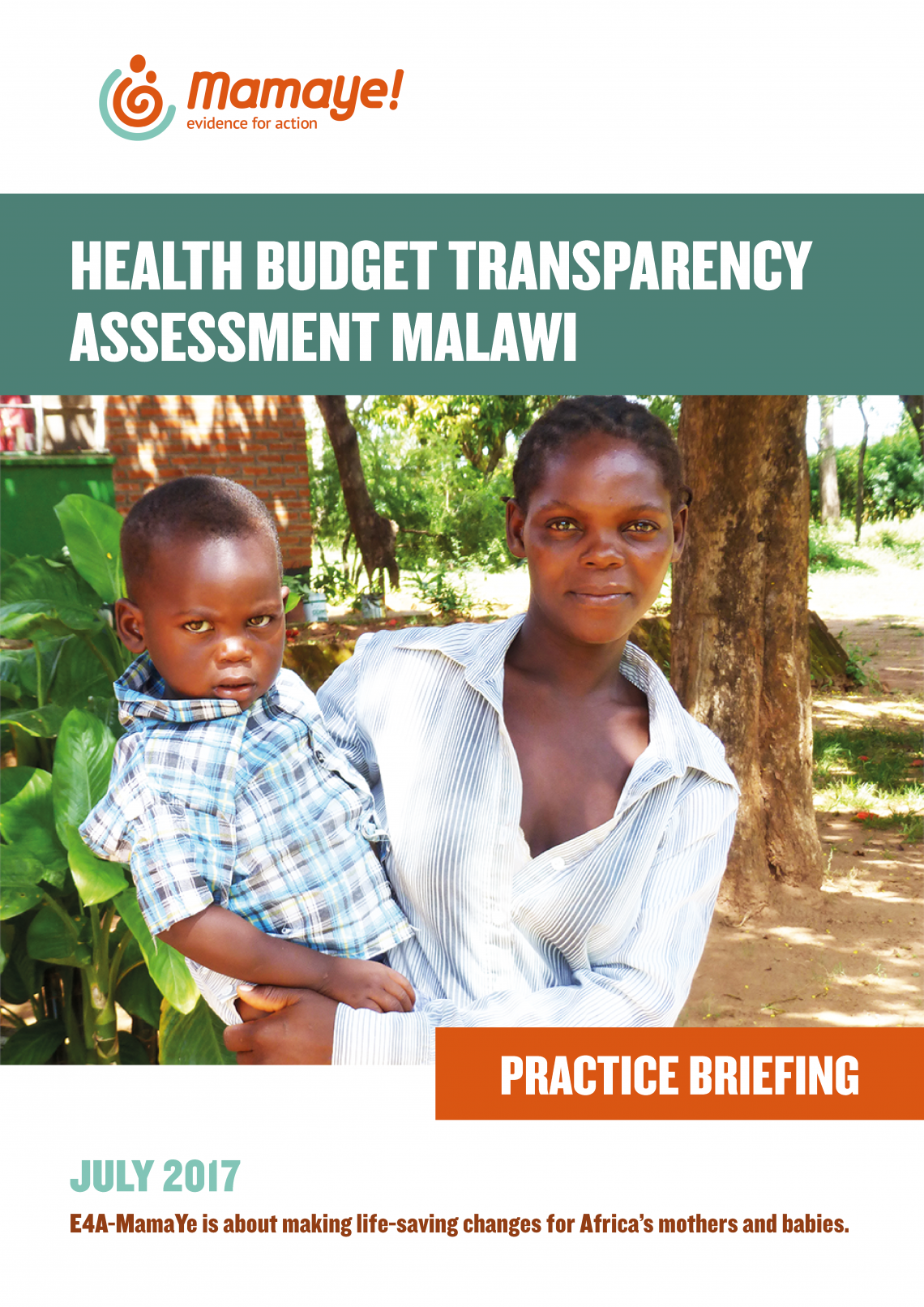Helping reforms of health agendas in Malawi through Budget Transparency
In Malawi, the process of the Health Budget Transparency Assessment (HBTA) focused on bringing together civil society representatives, health workers and district government representatives to collect, analyse and interpret data related to the district budget cycle. The evidence collected helped track the extent to which district governments are consulting during the planning of the budget, have supportive governance structures in place and disseminate details of the budget when it is finalised.
The aim of this practice briefing is to provide clear details of how this assessment process works and what it achieved while E4A-MamaYe implemented it in Malawi. The briefing includes the tools and templates used during the assessment, which can be adapted to different contexts.
In Malawi, the HBTA assessment has been adopted by district councils. We spoke to Paul Kasalu, Safe Motherhood Coordinator and Mzimba District Team Leader for the HBTA assessment to get his views on the strength of the approach.
Q. How are you involved in the HBTA assessment?
I am a district team leader responsible for the planning and implementation of the HBTA. My main responsibilities in HBTA include mobilizing resources to assist in the assessment, identifying team members who are to conduct the assessments, as well as re-orientating team members on the HBTA questionnaire tool. I communicate with duty bearers about the exercise and assessment process, data analysis, report writing and dissemination of findings. I am also responsible for communicating the main findings of HBTA to key players such as the district Commissioner and the director of Health and Social Services to facilitate action.
Q. The E4A-Mamaye programme closed in Malawi in May 2017, yet Mzimba has continued to implement the assessments. Why?
Mzimba decided to continue implementing HBTA assessment because it is considered as the best practice learnt from the E4A- MamaYe campaign.
Q. What value do you see in the HBTA assessments? How do they help the district?
The HBTA assessments have led to improved transparency in district/partner working relationships. For example, the formulation of the 2017/2018 DIP (District Implementation Team) has for the first time involved community consultations at local levels such as Area Development Committee (ADC) and Hospital Advisory Committee (HAC). Thus the HBTA has served to advocate for the poor citizens to have input into the quality of health care that is provided to them.
Q. What, for you, are some of the key successes of the HBTA assessment?
Mzimba has now included the views of the community in the 2017/2018 DIP. We have quarterly stakeholder review meetings to discuss the performance of the stakeholders and the district – which did not happen previously. The minutes of the Health and Environment sub-committee meetings held at the district council to discuss the health budget are now pasted on the notice board and made available to the public.

